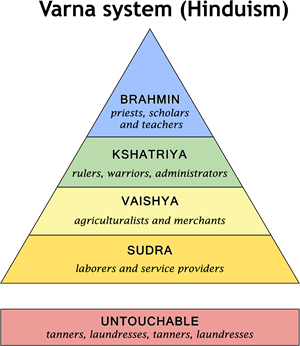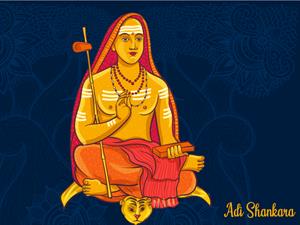
PUMPA - SMART LEARNING
எங்கள் ஆசிரியர்களுடன் 1-ஆன்-1 ஆலோசனை நேரத்தைப் பெறுங்கள். டாப்பர் ஆவதற்கு நாங்கள் பயிற்சி அளிப்போம்
Book Free DemoCaste System in Medieval India:
The Caste system was a unique feature that was found only in Indian society. Other religions which were prevalent in India didn’t adopt this system, except the Hindu religion.
It had a strong social structure and segregation according to the people’s occupation to maintain a hierarchy.
The Social order of the Later Vedic society had many changes which were not present till that time. This period saw the intermingling of people, both the Aryans and the Non – Aryans.
The Aryans were the people of higher strata who were fair compared to the non- Aryans, which urged them to establish a social order to classify others.
The Aryans established a new social order named Varnashrama bifurcated people according to the race in earlier periods and by using their professions in the later Vedic age.

Varnashrama
The Varnashrama of the later Vedic age had four layers, namely.
Brahmanas – The Priestly class
Kshatriyas – The Warrior class
Vysya - The Merchant people/ traders
Shudras – The Lower class/untouchables
Sunga Dynasty: The Caste system was rigidly followed, especially after establishing the Sunga dynasty by Pushyamitra Sunga, an ardent follower of Brahmanism.
The hereditary social groups of people were known as the “Jati”; the word was obtained from the root word “Jana”. Every Jati strived to attain supremacy by controlling the assemblies of that period.
Colin Mackenzie: He was a military engineer of the British army who collected manuscripts regarding history, society, structure, and architecture. His manuscripts also contained details about the genealogies of Caste.
The lower strata people were denied the rights and privileges entitled to them by the people of higher echelons.
Religious sects in Medieval India:
The Medieval society had a huge leap in social reforms, which was carried out by the religious reformers from various sects. Some of the important reformist movements and their role in shaping society are discussed below.
1. Bhakti Movement: \((800 – 1700 CE)\):
The Bhakti movement was started by Shankaracharya, who was a great philosopher and great thinker himself. He propounded ideas that introduced the new practice in the Hindu religion.

Shankaracharya
The objective of this movement was to eliminate the practice of idol worship, which was achieved during the later period. His ideas are taken forward by his followers Chaitanya Mahaprabhu, Namadeva and Tukaram.
2. Buddhism and Jainism:
The religion of Buddhism witnessed its downfall due to the decline in followers and lack of patronage from the rulers. Jainism still prevailed in arts among the traders and the merchant class.
3. The Advent of Christianity:
Christianity found its roots by the visit of Christian missionaries who followed the sailors of European lands. Vasco da Gama and its followers, when they landed in Calicut, began to spread the ideology.
Christianity spread widely among the fishermen community who were settled on the shorelines. The spread of the religion among the fishermen community was attributed to “St. Francis Xavier”.
4. Sikhism in North India:
The religion of Sikhism spread through the northern lands when Sikh Guru, Guru Nanak, began to pronounce his ideals. His principles took the religions to new heights under the Mughal, which earned the wrath of the Islamic rulers.